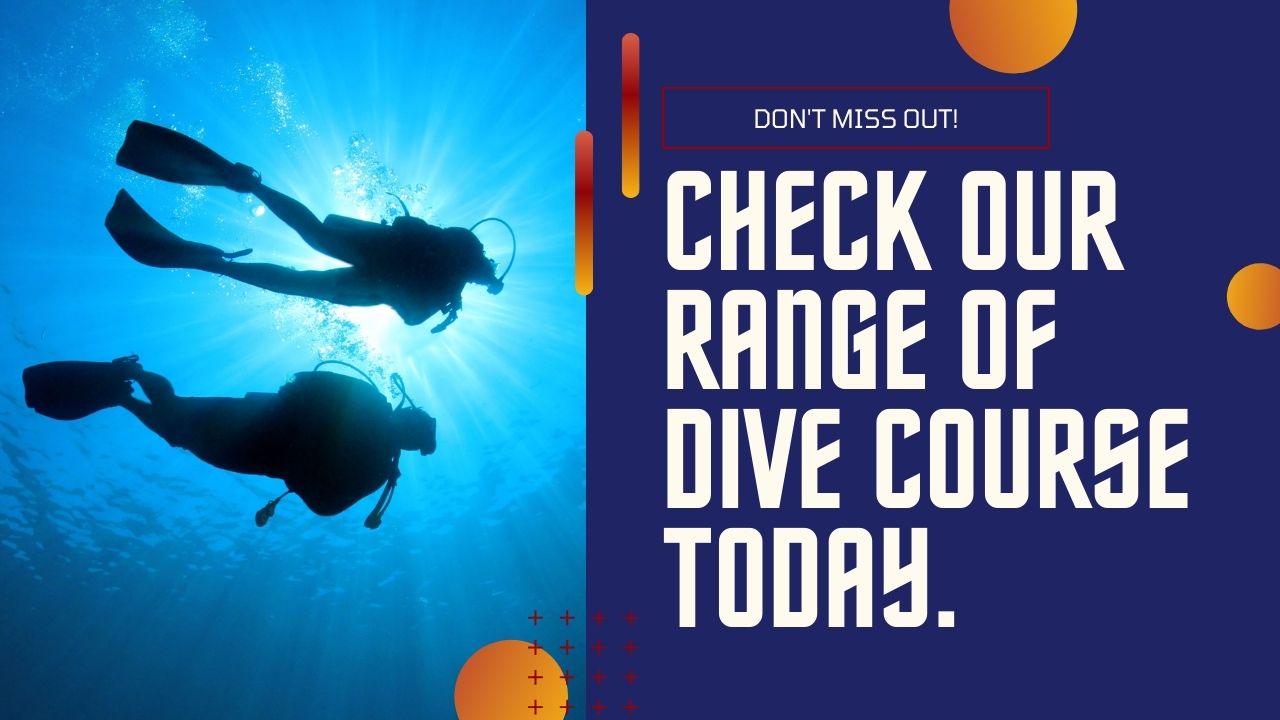You have 0 product(s) in your cart.
Abyss Scuba Diving
Saturation Diver: Exploring The Depths Of A Unique Craft

Braving the Depths: The Thrilling Life of a Saturation Diver
Imagine working deep underwater, your body acclimated to the immense pressure, your home a saturation chamber on a vessel above. As a saturation diver, this is the norm. This article delves into the high-pressure life of these divers, detailing the skills, risks, and day-to-day reality of a job far removed from the ordinary.
Key Takeaways
-
Saturation diving is a vital specialized craft for underwater infrastructure tasks, where divers live and work underwater for extended periods in pressurized conditions to avoid the risks of decompression sickness.
-
Divers undergo intensive training for technical skills, safety protocols, and the use of breathing gas mixtures like heliox and trimix to sustain prolonged deep-sea activities under enormous pressure, which can also pose serious health risks.
-
The future of saturation diving is tied to technological advances and global economic shifts, with innovations such as self-propelled hyperbaric lifeboats improving safety and environmental changes potentially impacting job security.
Introduction
Saturation diving is more than a job; it’s a call to the brave, inviting them to explore the icy depths of the North Sea and beyond. It’s a specialized craft within the underwater industry, critical for the very infrastructure that lies beneath the waves. From the construction of colossal oil platforms to the intricate tunneling and caisson work, saturation divers are the unsung heroes of the deep.
These divers dedicate entire work periods to being submerged, with their existence and work tied to a support vessel that functions as both a lifeline and a surrogate home. Their journey to and from the ocean floor is facilitated by a unique piece of technology—the personnel transfer capsule—ensuring that they can perform their vital roles securely and efficiently.
Saturation Diving Explained
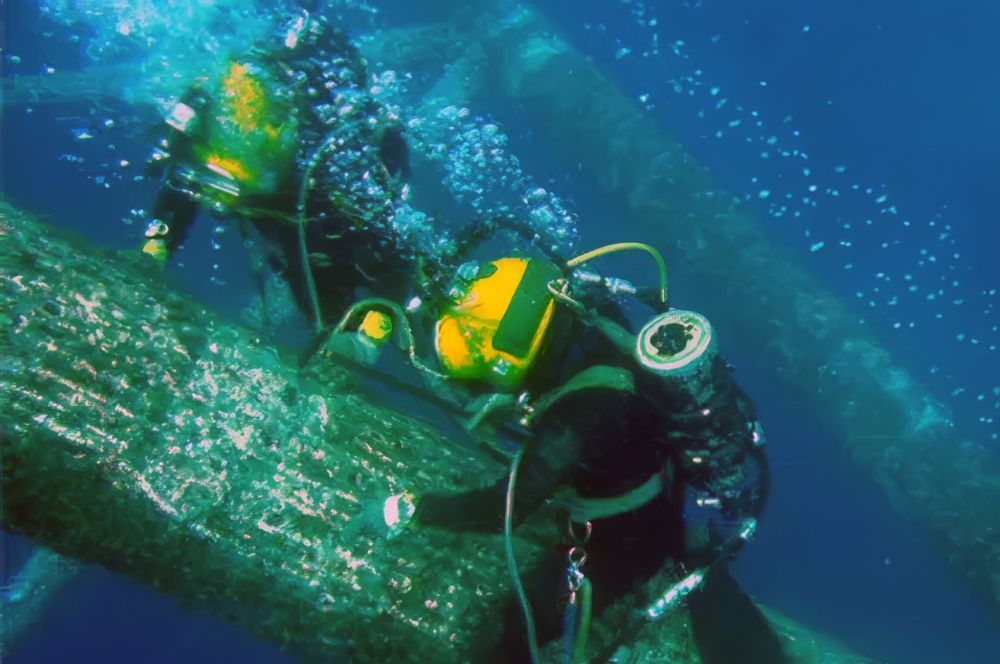
Saturation diving demonstrates engineering marvel and human tenacity, enabling divers to operate at depths that recreational scuba divers cannot reach. The process involves the use of a saturation system, where divers breathe pressurized air and their tissues become fully saturated with inert gases. This saturation point is critical; based on Henry’s law, once reached, additional time spent underwater does not increase the necessary decompression time. It’s a delicate balance that enables sat divers to conduct deep sea diving without the repeated and time-consuming decompression stops required by scuba diving.
In this unique commercial diving method, divers stay within a saturation chamber on a support vessel or offshore platform, coming out solely to carry out their deep-sea tasks. They travel to the depths via a diving bell, a sealed chamber that transports them safely to their underwater sites. During a diving shift, the divers breathe a carefully composed blend of gases that allows them to withstand the pressure and avoid decompression sickness—a risk that all deep divers must manage.
The end of a saturation dive signals the beginning of a meticulously planned decompression procedure. Unlike navy divers or scuba diver enthusiasts, saturation divers undergo a single decompression at the end of their diving team’s mission, which can span days or even weeks. This decompression is carried out within the saturation system, ensuring the safety of the divers as they gradually adjust back to surface pressure.
Every saturation dive is a multifaceted process, encompassing not only the divers but also a team of specialists on the surface. These experts have different roles and responsibilities, including:
-
Monitoring the divers’ physiological processes
-
Managing the life support systems
-
Ensuring the divers’ safe return to the surface after their shift at such extreme depths
It’s a symphony of precision and expertise, with every role playing a crucial part in the success of the operation.
The Role of the Saturation Diver
The saturation diver’s role is diverse, necessitating a combination of technical aptitude, physical stamina, and mental strength. At the heart of their work lies the maintenance of oil platforms, which are colossal structures requiring constant care to ensure their operational integrity and safety. These commercial divers are also the architects of the sea, constructing underwater structures that must withstand the relentless pressures of the deep.
Beyond construction and maintenance, saturation divers are the go-to specialists for deep-sea salvage operations. They are trained to navigate the high-pressure conditions of the ocean floor, where they conduct structural inspections, perform welding tasks, and explore uncharted territories. It’s a career that combines the thrill of discovery with the satisfaction of problem-solving, all performed in an environment alien to most.
However, a saturation diver’s life isn’t defined exclusively by their underwater endeavors. When not on a diving shift, sat divers spend their time within the saturation system, living lives surprisingly similar to those on dry land. They eat, sleep, and engage in leisure activities, albeit in a pressurized chamber that becomes both their haven and their confines during the saturation point of their mission.
Training and Certification
The path to becoming a saturation diver starts with a robust foundation—a high school diploma and basic diving certification. But the ascent doesn’t stop there. Prospective commercial divers must plunge into advanced training, mastering specialized techniques like hyperbaric welding and underwater construction. Alongside technical prowess, certifications in advanced first aid or underwater welding further equip divers to handle the unexpected in the abyss.
Technical institutes and employer-sponsored programs offer gateways into this niche of commercial diving. Here, aspiring divers learn not just the skills necessary for their trade but also the importance of safety in an environment that is as unforgiving as it is fascinating. They are trained to follow safe diving procedures meticulously and to adhere to Occupational Health and Safety regulations, ensuring that each mission is executed without compromise to diver or environmental well-being.
Becoming a diver medical technician (DMT) is also part of the rigorous training regimen. This role equips divers to manage medical emergencies that may arise in the pressure-laden confines of a saturation dive. It’s a comprehensive education that prepares divers not just to work at the frontiers of human capability but to thrive there, safeguarding themselves and their team against the perils of the deep.
The Saturation System
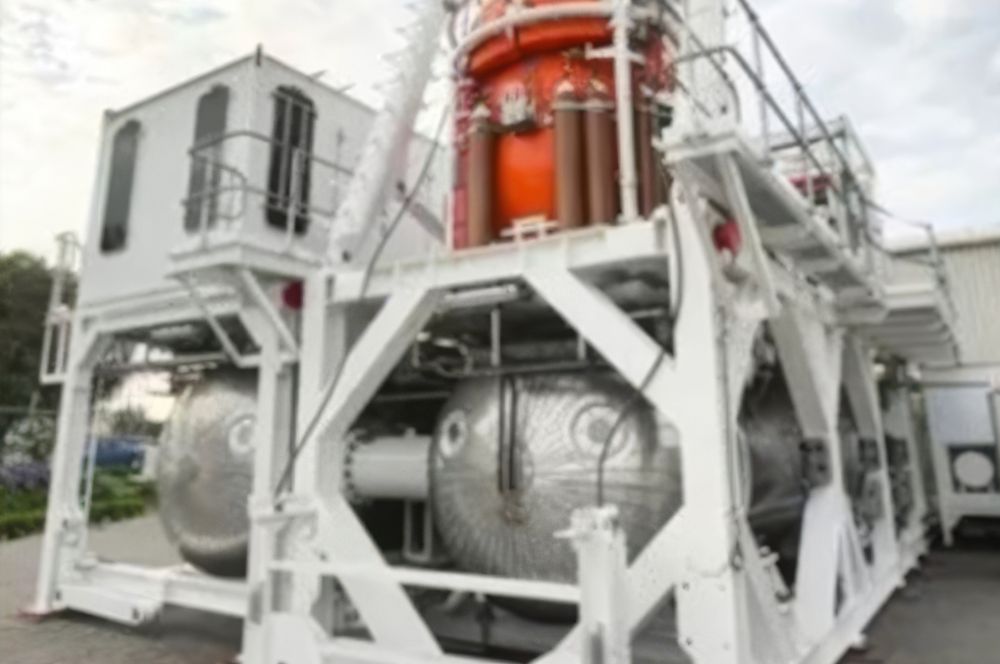
The saturation system is the saturation diver’s lifeline, comprising complex chambers and technology that facilitate prolonged underwater living. It comprises a living chamber, a transfer chamber, and a submersible diving bell, each designed to support the diver’s work and well-being. Whether installed on a vessel or transportable, this system is the bridge between the surface world and the ocean’s depths.
Transitioning to and from the underwater work site is made possible through the diving bell. Divers use this pressurized vessel to travel safely, effectively allowing them to perform tasks at depth without the need for daily decompression. It’s a remarkable feat, enabling saturation divers to live and work in environments that would otherwise be brief and perilous visits for even the most experienced scuba divers.
Within the saturation system, the atmosphere is carefully controlled to maintain diver health. The following factors are managed:
-
CO2 levels are kept to a minimum
-
O2 levels are managed to avoid toxicity and ensure adequate breathing
-
Life support systems not only supply breathing gas but also regulate the chamber climate and manage sanitation, creating a livable space even at the bottom of the sea.
The chamber that saturation divers call home is adjusted to match approximately the same pressure of the work depth, a necessity that allows them to conduct their tasks without the constant threat of decompression injury. It is in this pressurized habitat that divers spend their off-shift hours, resting and preparing for the next dive, enveloped by an environment as meticulously engineered as it is alien to our natural world.
Breathing Gas and Mixtures
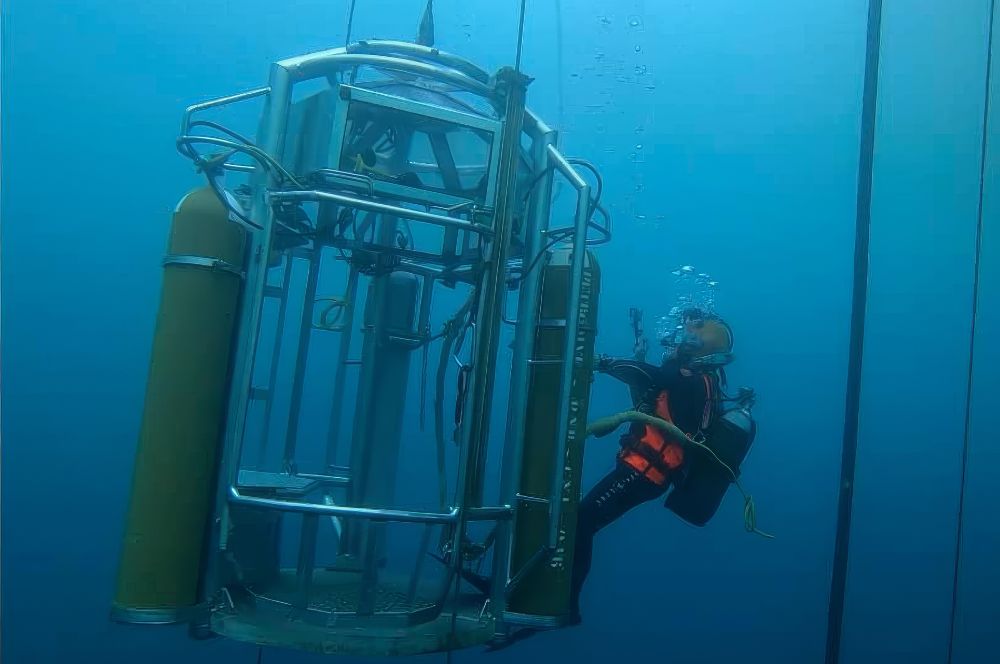
For saturation divers, the inhaled breathing gas is vital—it’s a mixture tailored to the depths they descend to. Heliox, a mixture of helium and oxygen, is commonly used to prevent the disorienting effects of nitrogen narcosis and to facilitate easier breathing under pressure. It’s a concoction that underscores the fine line divers walk between the physiological demands of their work and the need for safety.
At the precipice of extreme depths, divers may turn to trimix—a gas mixture of oxygen, helium, and nitrogen. This blend helps stave off the neurological symptoms of high-pressure nervous syndrome (HPNS), a condition that presents real danger to those working below 500 feet. For the deepest and most challenging saturation dives, a hydrogen-based mixture may even be employed, pushing the boundaries of what’s possible under pressure.
Each breath a saturation diver takes is a careful calculation of partial pressures, ensuring that oxygen toxicity is kept at bay during prolonged exposure. And yet, this reliance on inert gas like helium comes with its own challenges, as it significantly increases heat loss, necessitating an environment within the saturation system that compensates for this rapid conduction. It’s a balance of chemistry and comfort, where every storage breathing gas exposes a safeguard against the deep’s unseen threats.
Living Under Pressure
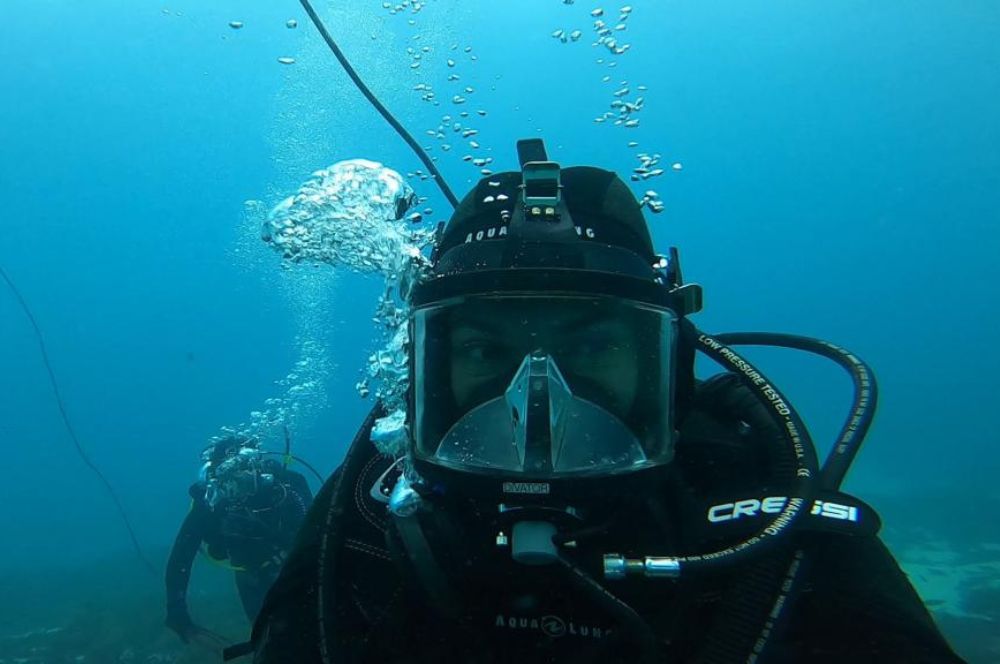
For saturation divers, life under pressure is vastly different from the liberating experience of leisure scuba diving. The pressurized living quarters become their home, a place where temperature, humidity, and gas composition are regulated with the utmost care to preserve their health and safety. It’s an environment crafted to mimic the surface, yet inherently different in its constraints and challenges.
For approximately 16 hours a day, saturation divers reside in this unique habitat, their activities ranging from rest to recreation, all while maintaining the same pressure as the sea floor they work upon. Meals are provided by chefs on the support vessel, maintaining a semblance of normalcy even as the divers live in conditions far from ordinary. Yet, living continuously at ambient pressure comes with inherent health risks, such as decreased lung function and increased susceptibility to infections and cataracts.
To stave off the monotony and stress of life in confined quarters, divers often establish personal routines and indulge in entertainment like reading and movies, fostering a sense of normalcy within the saturation chamber. And when it’s time to dive, they don hot water suits, a technological marvel that keeps them warm amidst the chilling embrace of the deep.
The team climate is crucial in this isolated world, with sociability, consideration, and trust forming the bedrock of a successful operation. These attributes are not just nice to have; they are essential for maintaining morale and focus, ensuring that each member of the diving team can rely on the others, no matter what the depths may hold.
Safety Measures and Protocols
In the world of saturation diving, where risks constantly lurk, safety measures and protocols require an unshakeable commitment. Enhanced safety begins with a comprehensive Safe Work Method Statement (SWMS), which outlines every conceivable emergency response plan, from communication protocols to evacuation plans, and the availability of medical support systems. It’s an extensive document that serves as the blueprint for a safe and successful operation, leaving no stone unturned.
Regular equipment inspections are a cornerstone of these safety measures, ensuring that any potential faults are identified and addressed before they can pose a threat to diver safety. Workload management is equally critical, as fatigue can be a silent adversary in the high-stakes environment of saturation diving. Personal protective equipment is also mandated to shield divers from the myriad hazards they may encounter, from the pressure-related risks of barotrauma to the perils of chemical exposure.
Training in the safe use of high-pressure equipment and emergency response is an ongoing process for saturation divers. Advanced training courses are not just a formality but a necessity, equipping divers with the knowledge and skills to navigate the unexpected, ensuring that every mission is as safe as humanly possible.
Challenges and Risks
Despite the supporting technology and training, saturation divers face inherent challenges and risks in their profession that can’t be completely mitigated. Compression arthralgia, a debilitating joint pain caused by high-pressure environments, is a common affliction among saturation divers, though the use of trimix can help mitigate its effects. However, the specter of high-pressure nervous syndrome looms large, especially for those who venture below 500 feet using heliox, bringing with it tremors and other neurological symptoms that can jeopardize the safety of a dive.
The psychological and social challenges are no less daunting. Prolonged periods away from home and the isolation of living within a pressurized environment can lead to significant family-work conflict, a strain on mental health that divers must navigate with as much care as their physical safety. To combat these stressors, saturation divers cultivate personal routines and engage in leisure activities, creating a semblance of normalcy in an extraordinary setting.
Each dive, each day spent in the saturation chamber, is a testament to the resilience of these individuals who choose to live and work in one of the most inhospitable environments on Earth. They do so driven by a passion for the deep, a commitment to their craft, and an unwavering resolve to overcome the challenges that come with exploring the ocean’s frontiers.
Technological Advances
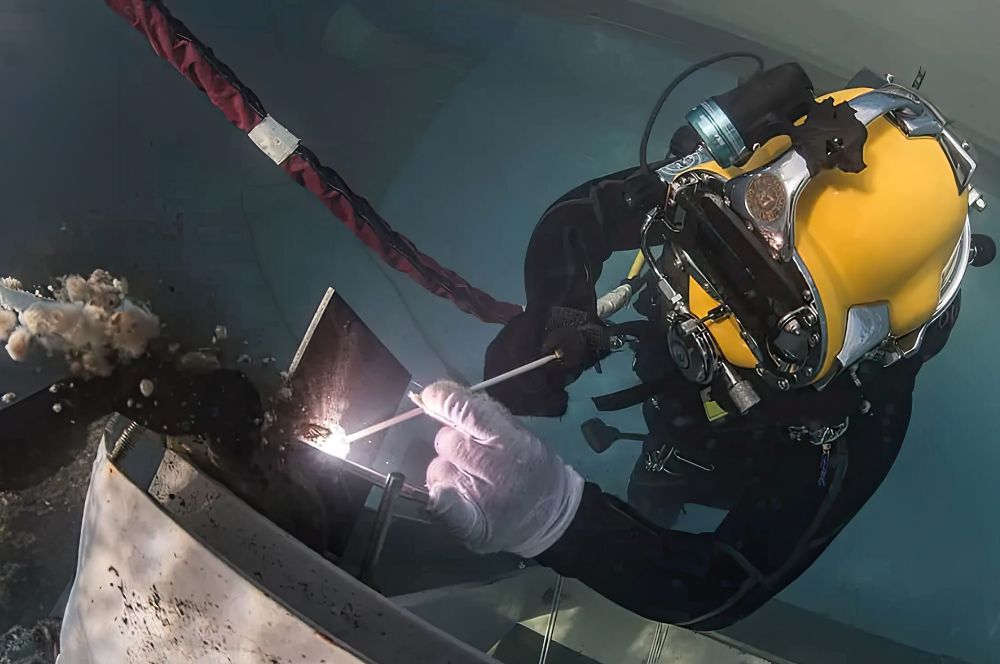
Innovations that boost diver safety and operational efficiency continue to shape the future of saturation diving. Self-propelled hyperbaric lifeboats (SPHLs) have become an integral part of modern hyperbaric rescue systems, offering a secure means of evacuation with life support in emergency scenarios. It’s a leap forward in ensuring the well-being of divers should the need for rapid evacuation arise.
The pursuit of enhanced safety has also led to the development of accelerated decompression protocols, enabling a quicker return to surface pressure in situations where traditional decompression is not feasible. And at the cutting edge of diving technology stands the DSEND system, a revolutionary atmospheric diving suit developed by the US Navy. It maintains a one-atmosphere environment around the diver, effectively obviating the need for decompression altogether and opening new vistas of underwater exploration.
With its lightweight design and advanced features like sensorized armor and rotating joints, the DSEND suit represents a significant advancement in the field. It allows divers to perform complex tasks with greater agility and less risk, reshaping the way we think about working at such extreme depths.
Real-Life Accounts
Behind the technology, training, and protocols are the saturation divers themselves, individuals driven by an array of motivations as deep and varied as the oceans they explore. The allure of high wages is undoubtedly a compelling factor, rewarding the extreme conditions and risks that come with the job. But for many, it’s the unique challenges and the opportunity to be part of extraordinary operations that draw them to this line of work.
Balancing the demands of this intensive career, saturation divers value their periods of leisure and time off, which provide a necessary counterbalance to their rigorous work schedules. These breaks from the underwater world offer a chance to reconnect with loved ones, to rest, and to recharge for the next descent into the depths. It’s a rhythm of intensity and reprieve that characterizes the saturation diver’s life, one that is as much about the thrill of the dive as it is about the joy of surfacing to the world above, a world shared with recreational divers.
Career Opportunities
The enticement of the deep offers tangible rewards; saturation divers can earn substantial salaries, commensurate with the specialized and risky nature of their work. Earnings range from $30,000 to $45,000 per month, with annual compensation reaching up to $180,000 USD for some, creating a competitive market with expanding demand. These figures underscore the high value placed on the unique skills and bravery of saturation divers.
Career paths for these professionals are as diverse as the depths they explore. Opportunities abound across various sectors, such as:
-
offshore oil exploration
-
marine salvage
-
civil engineering
-
environmental surveying
The advancements in habitat technology also pave the way for new roles in marine science, allowing researchers, including saturation divers, to immerse themselves in underwater studies for extended periods. However, the ebb and flow of the economy can create waves of job insecurity, particularly during downturns in the oil industry when projects can become scarce.
Yet, for those drawn to a life at sea, the challenges are part of the appeal. The career of a commercial diver, especially one who specializes in saturation diving, is marked by a unique blend of adventure, technical expertise, and the constant push against the boundaries of human endeavor. It is a profession that not only demands the utmost from those who pursue it but also offers the satisfaction of a job unlike any other.
Future of Saturation Diving
The future of saturation diving is both thrilling and unpredictable, with its path being shaped by technological advancements and global shifts. Innovations such as liquid breathing and superior life support systems stand at the forefront of research, promising to redefine the limits of human underwater capabilities. These advancements could herald a new era for saturation divers, one where the extremes of depth and duration are pushed even further.
Yet, the very industry that saturation diving has served so well is in a state of flux. The global changes in fossil fuel use, coupled with advancements in technology, present both challenges and opportunities for saturation divers. Concerns over job security and the future of offshore drilling initiatives have created an undercurrent of uncertainty within the community, as divers ponder the impact of these shifts on their livelihoods.
Despite these changes, the need to explore and work at extreme depths will persist, driven by human curiosity and the relentless march of progress. Underwater structures will still need maintenance, the sea floor will continue to yield secrets, and the call of the deep will remain. Saturation diving may evolve, but its essence—a blend of courage, skill, and tenacity—will endure as long as there are frontiers to conquer and depths to plumb.
Summary
From the intricate dance of pressurized gases to the embrace of a hot water suit against the cold abyss, the life of a saturation diver is a symphony of extremes. We’ve journeyed through the depths of this unique profession, exploring the rigorous training, the advanced technology, and the sheer human will that enable these divers to thrive in environments most will never see. It is a tale of the human spirit’s resilience, the quest for exploration, and the relentless pursuit of pushing the limits. May the depths continue to inspire awe and respect, and may those who brave them always surface with stories that captivate and inspire.
Frequently Asked Questions
What is saturation diving, and how does it differ from scuba diving?
Saturation diving allows for extended work at extreme depths without daily decompression stops, unlike scuba diving, which requires frequent decompression. This is because saturation divers live in a pressurized environment and undergo a single decompression at the end of their mission.
What kind of training is required to become a saturation diver?
To become a saturation diver, you need a high school diploma, basic diving certification, advanced training in specialized techniques like hyperbaric welding, and additional certifications in first aid and safety procedures, as well as training as a diver medical technician to handle medical emergencies.
What are some of the psychological challenges saturation divers face?
Saturation divers face isolation, confinement, and family-work conflict, but they mitigate these challenges through personal routines and leisure activities during downtime.
What technological advancements have been made in saturation diving?
Saturation diving has seen advancements such as self-propelled hyperbaric lifeboats, accelerated decompression protocols, and the DSEND suit which ensures a one-atmosphere environment for the diver. These developments have enhanced safety and efficiency in deep-sea operations.
How might the future of saturation diving be impacted by global changes?
The future of saturation diving may be impacted by technological advancements, such as liquid breathing and evolving life support systems, as well as shifts in the fossil fuel industry. Concerns over job security and the demand for saturation divers may arise as the industry adapts to these changes.
-
Becoming a Dive Instructor: Your Ultimate…
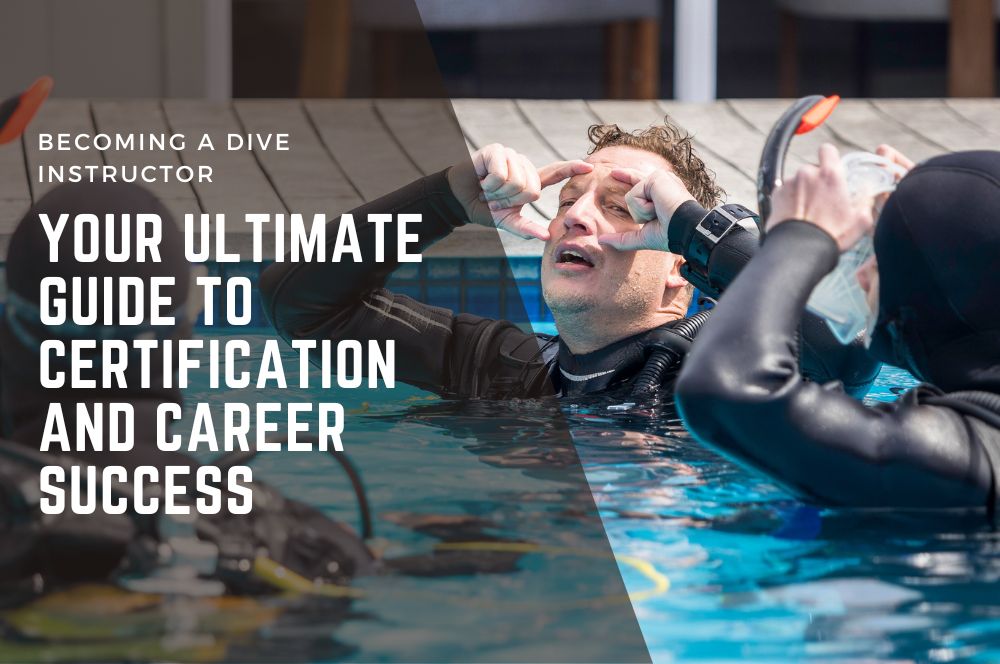
Becoming a Dive Instructor:…
Becoming a Dive Instructor: Your Ultimate Guide to Certification and Career Success To become a dive instructor, […] -
Maximize Career Potential with Recreational…
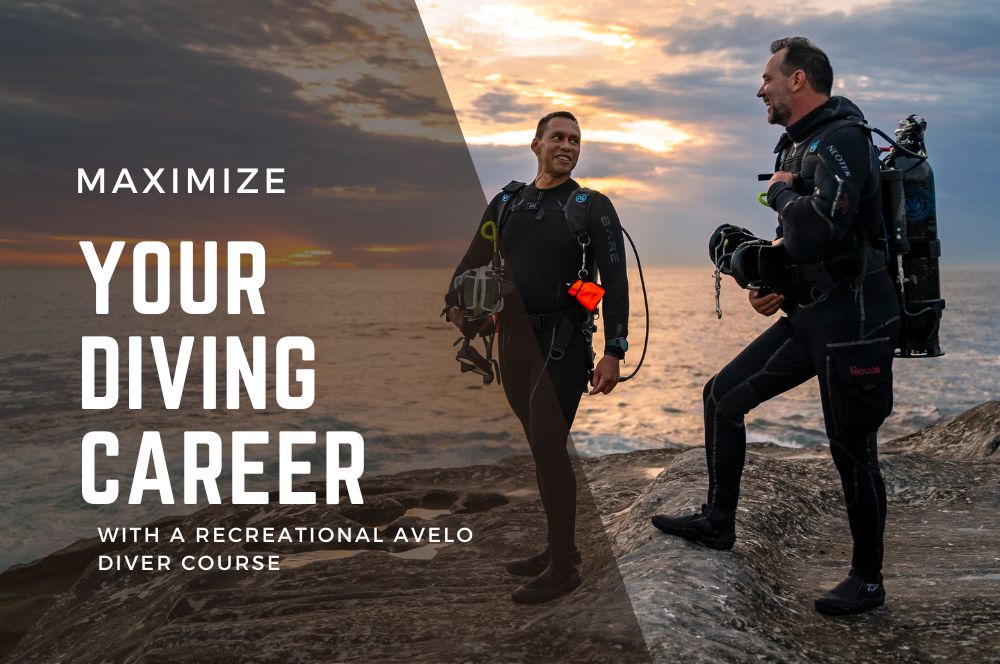
Maximize Career Potential…
Maximize Your Diving Career Potential with the Recreational Avelo Diver Course Today signifies a groundbreaking […] -
Diving Into a Career: Opportunities…

Diving Into a Career:…
Exploring the Benefits of a Career in Diving: A Look at Diver Jobs Imagine a career that combines the thrill […] -
Unravel the AHCLPW307 Scientific Diver…
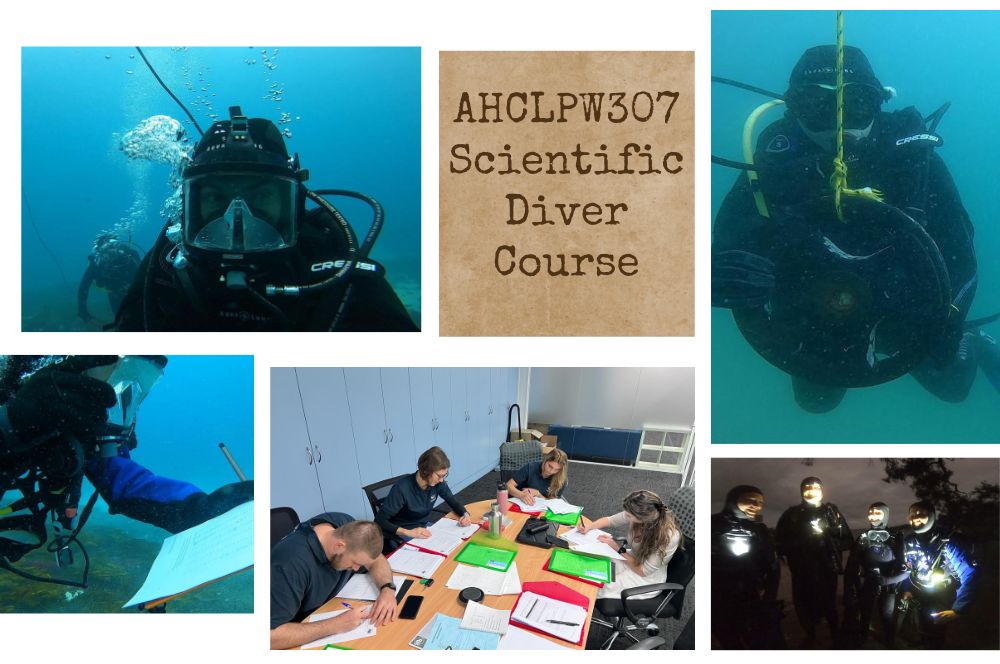
Unravel the AHCLPW307…
Unlocking the Secrets of AHCLPW307: Perform restricted diving for scientific purposes. Have you ever wondered […]
Recent Posts
